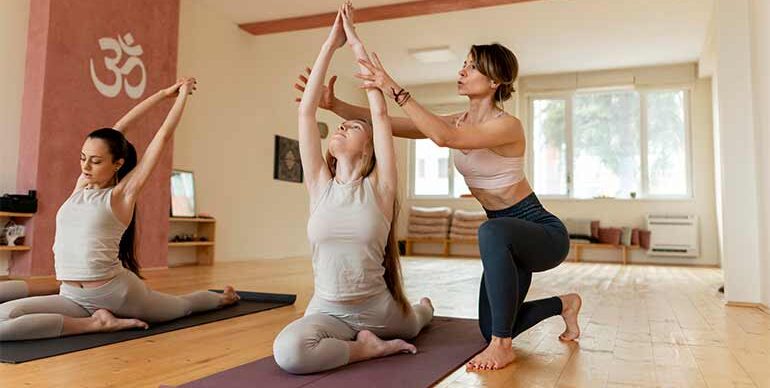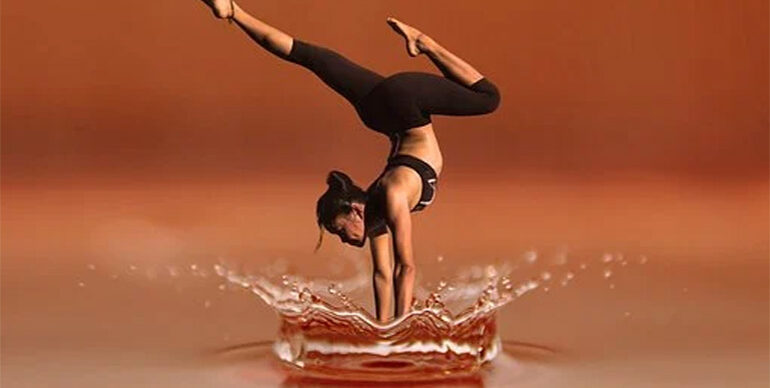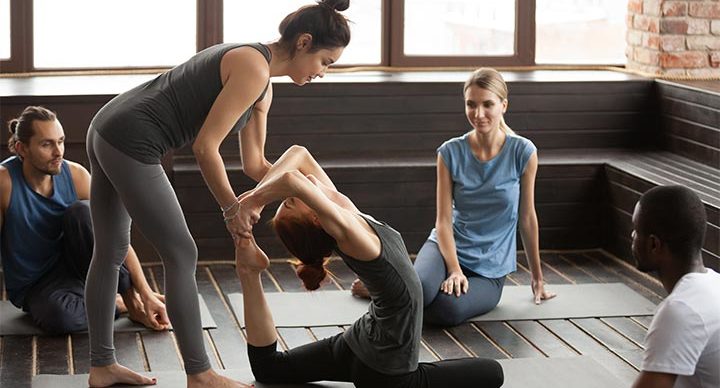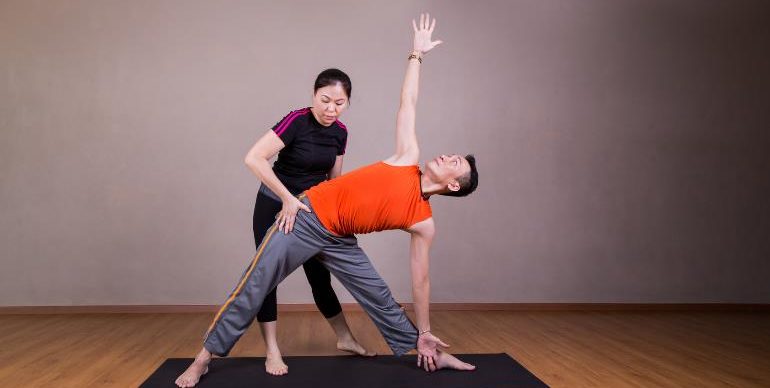
If you are a newly certified yoga teacher, venturing out to teach either in private and group classes can indeed make you feel proud, excited and full of energy and enthusiasm. You may also feel a touch of trepidation and fear. Fear not, this happens to the best of us. As a yoga teacher, you are expected to lead and direct a group of diverse students of varying age groups though an whole hour of yoga safely, effectively and in a balanced manner. The Wellintra Fitness team will now give newbie and fresher yoga trainers step-by-step guidance in preparing for and teaching classes by helping you start with the basics and give you more information on moving on to advanced techniques of yoga. We do assume that you are familiar with the information that is taught in a yoga teacher training course, especially the theory and the names of all poses. Let’s get started!
The Lesson Plan
Top Reasons to Make a Lesson Plan
Say you have been chosen by an institution, a yoga studio or by us to teach yoga to a group or an an individual. Your main goal should be that the class must be safe, enjoyable and correct. Of the hundreds of yogasanas and combinations, which one should you decide and in what order should you be combining them? These are questions that you must ask yourself first. Goals are more likely to be achieved if they are measurable, achievable and written down. The more detailed your goals, the more your chances of achieving success. Take this for e.g. “Walk for 60 mins thrice a week” is a better goal than say, “Get into shape”. One of the best ways for achieving your yoga class goals is to ensure that your yoga plans are written down.
The 4 Parts of a Yoga Class
Let us examine the structure of an ideal yoga class. You yourself would have attended many yoga classes and would have beyond a doubt noticed that every yoga class ends with relaxation – usually Shavasana. But you may not have keenly noticed the other parts of a yoga class. Every good yoga class has 4 basic parts taught in a linear order:
a. Centering
b. Warm-ups
c. Asana
d. Relaxation.
Let us dive into each of these components in more detail.
A. Centering
Every yoga class must begin with a centering exercise. A yoga session or a yoga class is a temporary sanctuary from the outside world. You can think of centering as a bridge between the world outside and the environment of the class. During the centering process, the attention of your students will move away from the concerns of their lives and be redirected on themselves and the class to come. There are many ways to center a class. The most commonly used Centering technique involves attention on the breath. A simple session could be one where a student is instructed to close their eyes and breathe in a conscious manner in a slow and smooth manner for a short period of time. Another technique could be to instruct the students to breathe in a counting pattern (inhale 4, retain 4, exhale 4) or ujjai. The students could either be standing, sitting or in a supine position during the Centering process.
The centering session can also be an ideal time to introduce pranayama breathing exercises. Pranayama can be quieting (three part breath), balancing (alternate nostril breath), energising (bellow breaths) and cooling (shitali, shitari). Any pranayama exercises can help in Centering and focusing. You should also consider the time of the day of your class. Energising breathing may be more apt in the mornings. Energising and relaxing breathing can also be apt in the evenings depending upon the energy levels of your students. Whenever you are introducing a new breathing technique to your class, you must allow at least 5 to 8 minutes of class time for instruction and practise of the particular exercise.
Also you must consider the composition of the students in your class when utilizing ‘Om’ chanting or any other Hindu religious chants. A long chant may turn off some students who have never experienced it before. On the other hand, overtly religious chanting may not be welcomed by those of other religious beliefs. Centering is a comfortable and easing-in activity and forges a sense of connection in your class. It does not have to occupy more than 5 minutes of your class time. The objective is that at the end of the Centering period, the minds and bodies of the students are still and are ready to proceed with the rest of the class.
B. The Warm Up
Once the mind is centered and everyone is more relaxed and receptive, it is time to prepare for asana practice. The warm up session will prepare everyone for asana practice. Why does a yoga class need a warm up? A warm up is a preliminary activity that helps prepare the students physiologically and psychologically for the stressful demands of yogasana practise. A warm up increases flow of blood to the muscles, ligaments and joints and reduces chances of joint and muscle injuries. The spinal muscles especially those of the lower back must be considered first during the warm up phase. The best known yoga warm-up is the surya namaskar. You will have to decide whether the surya namaskar is the best warm-up for your class though because doing it requires a good amount of strength and flexibility especially the part where you bring the feet in front and back in lunges. Variations of Surya namaskar such as the half salutation or the sunflower salutation are good substitutes for beginner students or a new class.
The warm up in a yoga class can take between five and fifteen minutes depending upon the level of fitness of the students. The fitter the participants are, the longer it will take to warm them up. Which is the reason why, more athletic variations of yoga such as Ashtanga and Flow begin with lots of rounds of Surya Namaskar or Sun Salutations.
C. Asanas
The asana part of a yoga class is the main event and will take a prime chunk of your schedule and also will take the most planning to get it right. The asana portion of the class also concerns the general order of types of yoga poses and the specific poses to be performed and their order and sequence. You must give a lot of thought about the goals that you want your students to attain. Depending on the goals and the nature of your class and whether you are teaching beginners, more advanced people or therapeutic yoga, the asanas will differ. Give a lot of thought on whether you want to concentrate on core strength and upper body or whether you want to construct a class where backbends and front bends are the major theme.
D. Relaxation
All yoga classes ends with a relaxation session usually with Shavasana. Apart from Shavasana, relaxation can also be a guided relaxation led by the teacher. Guiding the students through tensing and relaxing of the arms and legs individually as well as complete silence rest periods are also effective and may also be appreciated by your students. Do not compromise on the relaxation component of a yoga class. Leave five to seven minutes for the students to relax, stretch, roll into fetal position and then come into a sitting pose. Relaxation can also include pranayama or meditation practise, depending on the class and your own preference.
Creating a Lesson Plan
We have reviewed the 4 parts of a yoga class. You can now start writing your written plan on a piece of paper and keep reviewing them from time to time! Happy teaching!
If you are a newly certified yoga trainer, check our careers section here and apply. We are always on the lookout for young, enthusiastic and passionate yoga trainers in every city in India.
Author
Atin Dasgupta is the founder of Wellintra Fitness and is an artist-entrepreneur who makes music and builds digital-first businesses in his spare time!
Do not miss a single article!
Submit your email id to get new articles directly into your email inbox!
- Zumba Dance Fitness at Byjus - February 25, 2020
- History of Corporate Wellness Programs - February 18, 2020
- Yoga at a Conference - December 11, 2019




Add Review